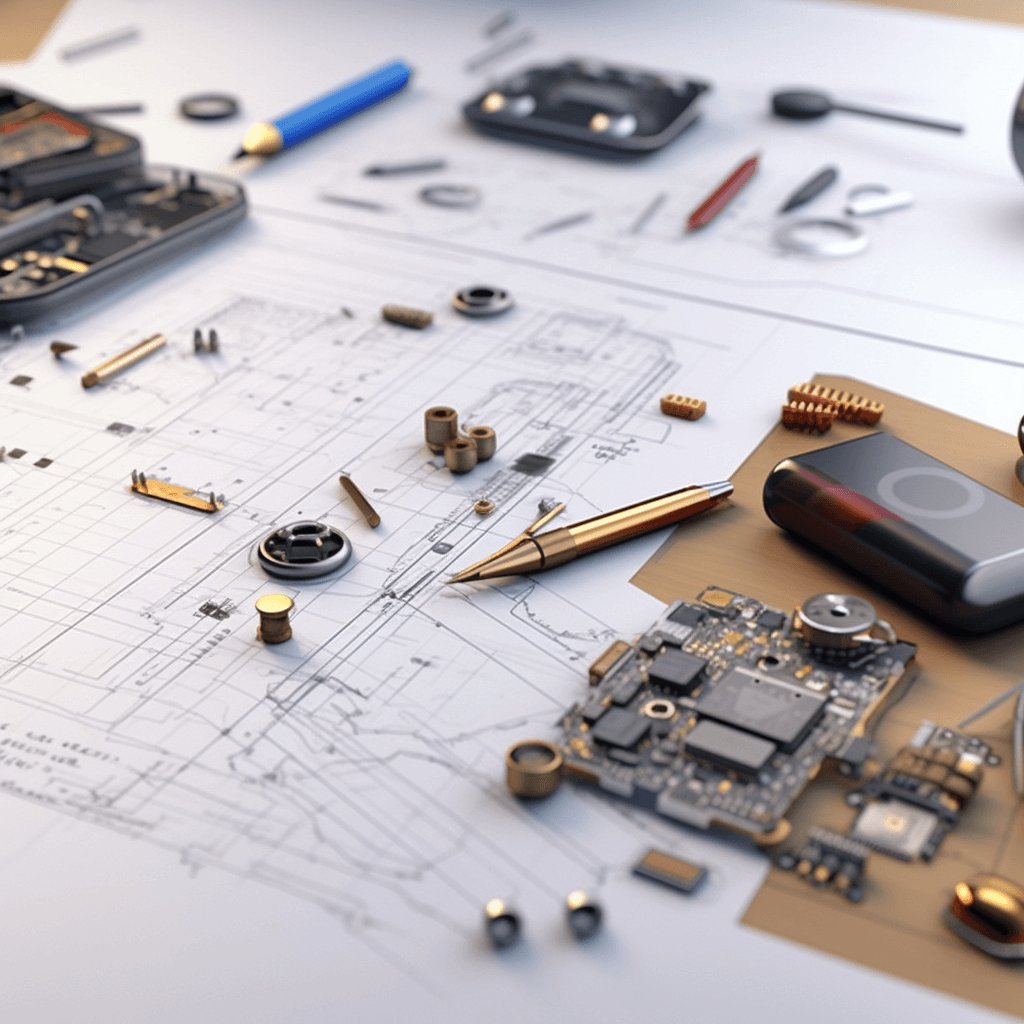

Market research is an essential part of any company's success, regardless of industry or size of business. It helps to understand customer needs and preferences, as well as to identify opportunities for growth and business improvement. The market research process is complex and requires knowledge, experience and time, but the results are extremely valuable and give you a competitive advantage. From this blog post, you will learn how to carry out market research and how to make the most effective use of the information obtained.
With regard to the purpose of market research, we distinguish among others:
In this text, we will outline the six stages that make up the market research process. Each of these will be described and discussed in detail to help you understand how you can conduct effective market research and get the best results.
The first step in the market research process is to identify the objectives and research questions you want to ask. The aim may be, for example, to obtain information on the potential demand for a new product in a given market, to compare the prices of competing products, to check the level of customer satisfaction or what are the most important factors influencing customers' product choice. Research questions should be clear and specific in order to obtain clear and valuable answers. It is also important to establish what information is needed to answer these questions.
Defining the research objectives and questions is important because it allows you to define the scope of the research and determine what information is needed to obtain answers. This is crucial for the subsequent stages of the research and avoids wasting time and resources on collecting information that is not needed to obtain a response.
Once the objectives and research questions have been defined, the choice of research methods follows. There are many different market research methods, such as surveys, interviews, focus tests, observations and market data analysis. Each method has its own advantages and disadvantages, so it is important to choose the method that best suits the objectives of the research and allows relevant information to be obtained.
For example, a survey is a good choice if you want to get a broad picture of people's opinions or attitudes, while focus tests are better if you want more detailed information about a particular product or service.
The choice of research method is important as it affects the quality and value of the information obtained. It is important to think carefully about what information is needed and to choose the right research method to obtain this information as much as possible.
Once the research method has been selected, the data collection stage follows. In this step, the research should be carried out according to the chosen method and the necessary information should be obtained. In the case of a survey, this may mean sending questionnaires to a selected group of people, in the case of focus testing, conducting a session with a test group, and in the case of market data analysis, gathering and analysing data from various sources.
Najważniejsze jest to, aby zbierane dane były rzetelne i wiarygodne. W przypadku badań ankietowych ważne jest, aby ankiety były odpowiednio przygotowane i skonstruowane tak, aby uzyskać jednoznaczne i wartościowe odpowiedzi. W przypadku testów focusowych ważne jest, aby ustalić odpowiednią grupę testową i odpowiednio przeprowadzić sesję. Natomiast w przypadku analizy danych rynkowych, aby dane były odpowiednio zebrane i przebadane, aby mieć pewność, że są wiarygodne i reprezentatywne.
The most important thing is that the data collected is reliable and credible. In the case of surveys, it is important that the questionnaires are properly prepared and structured to elicit clear and valuable responses. For focus testing, it is important to identify the right test group and conduct the session accordingly. In contrast, when analysing market data, to ensure that the data is properly collected and researched to be sure it is reliable and representative.
The data collection stage is important because the quality and value of the information obtained depends directly on the quality of the data collection. It is necessary to ensure that the data are collected in a reliable and credible manner in order to obtain the best possible results from the research.
Once data collection is complete, the data analysis stage follows. In this step, the data collected should be analysed and relevant information and conclusions should be drawn from it. In the case of a survey, this may mean analysing the responses to individual questions, in the case of focus testing, analysing the reactions and opinions of participants, and in the case of market data analysis, analysing trends and changes in the market.
Data analysis can be carried out using various tools, such as data analysis software, spreadsheets or manual calculations. At this stage, it is important to use the right tool to carry out a detailed and reliable analysis of the data.
Accurate and reliable data analysis at the information gathering stage is crucial, as it enables valuable conclusions to be drawn. To be sure of the correctness of these conclusions, it is important to carry out a thorough analysis.
Once the data analysis is complete, the reporting and presentation stage of the results follows. In this phase, a market research report should be produced that includes all the findings and information obtained. The report should be clear, transparent. Appropriate visualisations and tables can help to make the results easier to read.
The results of the market research should be presented in a form that the audience can understand. This could mean a presentation in the form of a PowerPoint presentation, a infographic or a written report. The results should be presented in a way that allows them to be easily understood and interpreted.
Once the market research report has been compiled, it can be presented to relevant audiences such as customers, investors, business partners or employees. The presentation of the results is an important stage, as it allows the results of the research to be communicated and to have an appropriate impact on business decisions.
The final stage of market research is implementation and monitoring of the results. In this stage, the conclusions obtained should be implemented and put into practice. This could mean introducing new products or services, changing the marketing strategy or changing business processes.
It is important to monitor and evaluate the effectiveness of the changes implemented and the results obtained. This allows an evaluation of the effectiveness of the implementation and possible adjustment of the measures in the future. Performance monitoring is important because it allows continuous optimisation of activities and better results.
Implementation and monitoring of the results is a key stage of market research, as it allows the results obtained to be put into practice and positive business outcomes to be achieved. Implementation should be regularly monitored and evaluated to ensure that actions are effective and produce the desired results. In this way, market marketing research not only provides valuable data, but also leads to more informed and effective decisions.
Do you have an idea for an electronic device that solves customers' problems? We can help you create a prototype and start serial production. Take advantage of our free consultation now and our experts will help you estimate costs and identify the best solutions.

Protection of inventions | 12.06.2023
When your company's ideas are used without permission, you risk financial loss and loss of...

Designing innovations | 24.05.2023
Key Elements of New Equipment Design Designing a new device is a process consisting of...

Trendy | 04.03.2023
Horizon Europe 2021-2027 – the largest programme of supportfor innovation Today, innovation has become a...